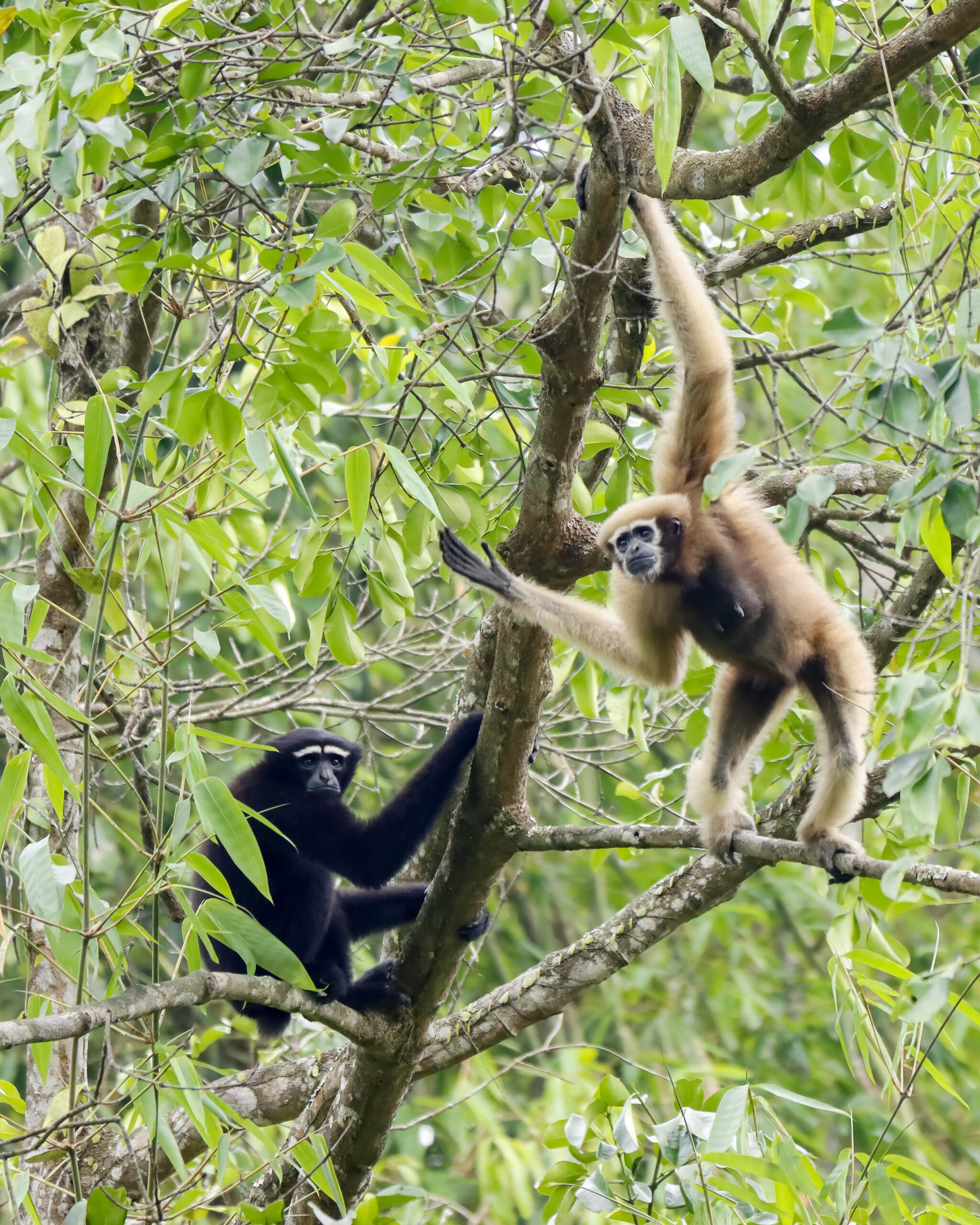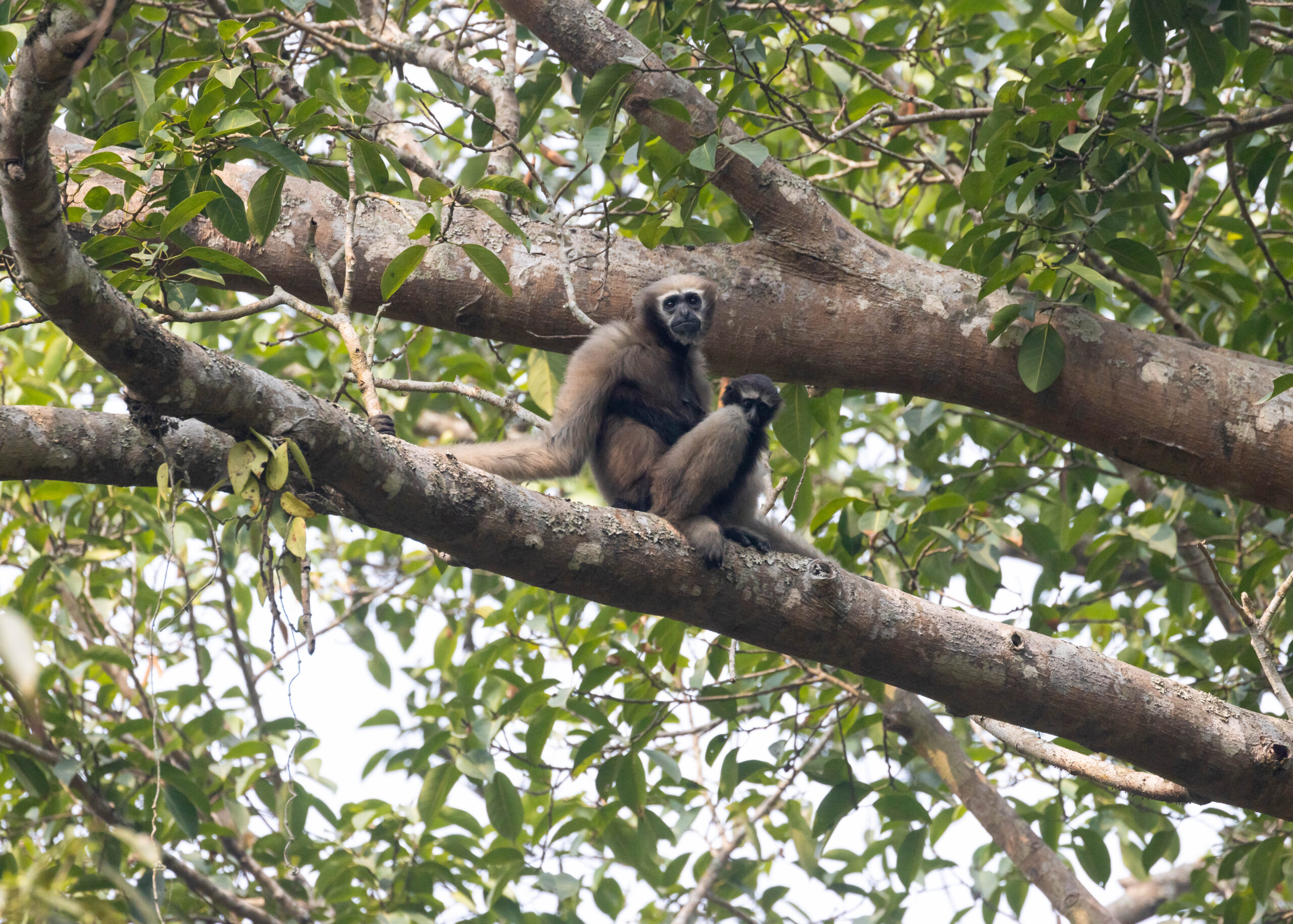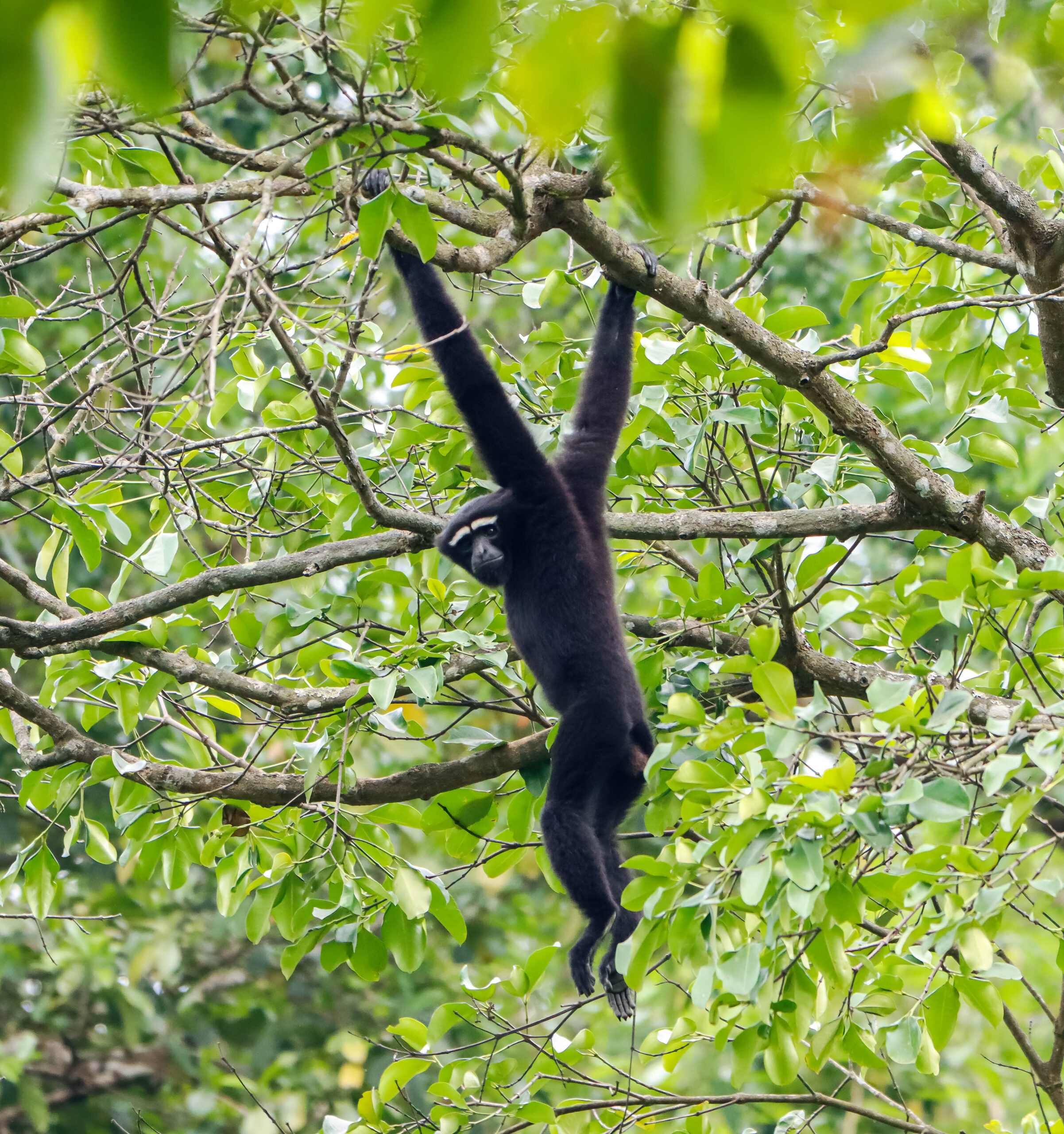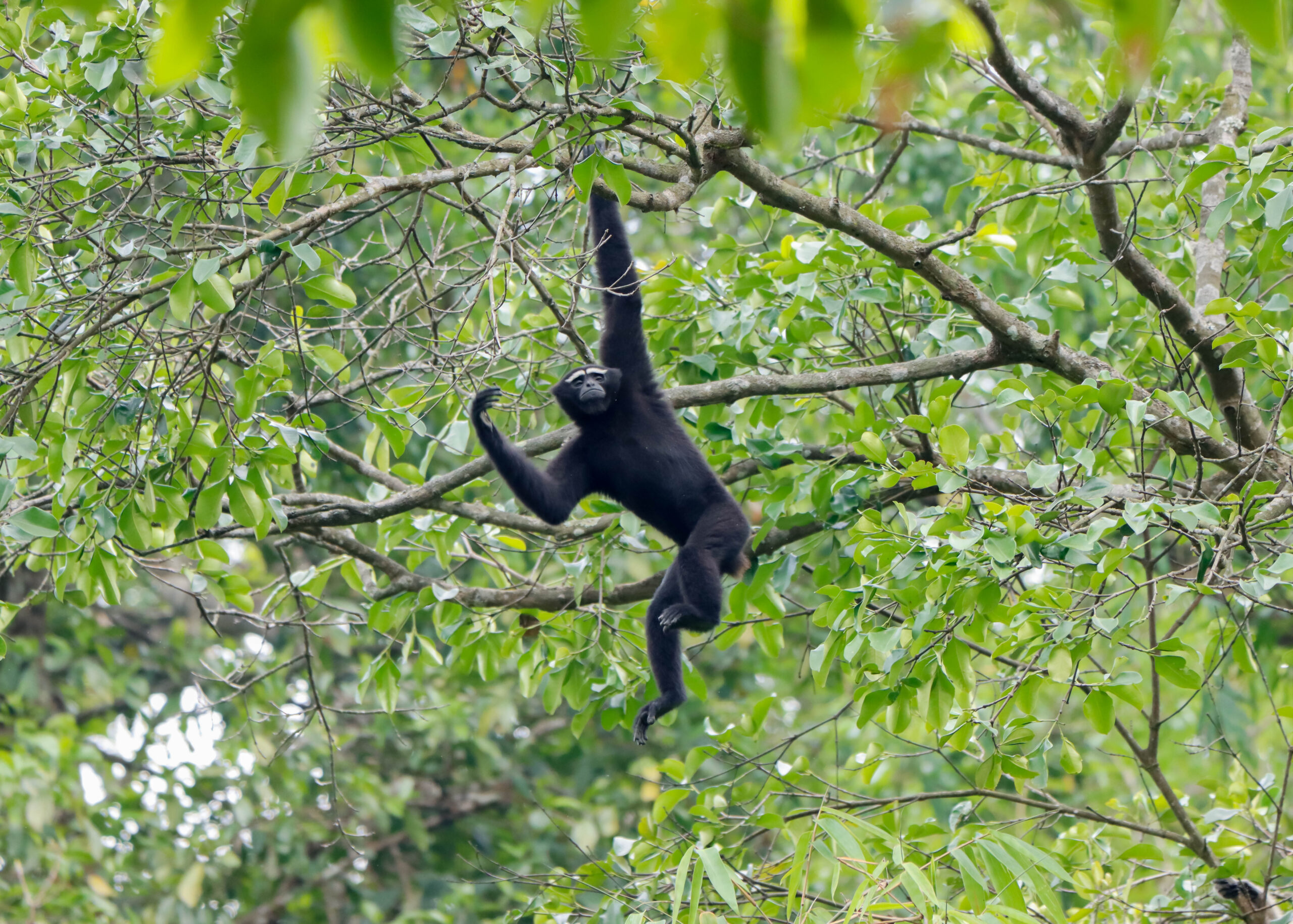Hoolock Gibbon (Hoolock hoolock), the only ape found in India is listed as an Endangered species by the International Union for Conservation of Nature (IUCN) in its Red List. Earlier it was believed that two species of Hoolock Gibbons (Western Hoolock Gibbon and Eastern Hoolock Gibbon) were found in the North eastern part India. But in a recent study led by the scientists of Centre for Cellular and Molecular Biology (CCMB), Hyderabad, it has been revealed that there is only one species of Hoolock Gibbon found in North eastern India. The study proves that there is no genetic dissimilarity between the Hoolock Gibbon and which was earlier termed as Eastern Hoolock Gibbon.

Description
The male Hoolock Gibbon is black in color while the female has greyish brown fur with darker chest and neck. The white eyebrows of both the sexes are distinctive. The juveniles are paler in color. Both the sexes are similar in size which reach up to 60 to 90 cm in length and 6 to 9 KGs of weight. The average life expectancy of Hoolock gibbon in the wild is 25 years.

Distribution & Habitat of Hoolock Gibbon
The Hoolock Gibbon is found in the North-eastern part of India, eastern Bangladesh and North-west Myanmar. In India it is found in some restricted areas of Assam like Kaziranga National Park, Hoollongopar Gibbon Wildlife Sanctuary, Garbhanga Reserve Forest etc. In Bangladesh, the population of Hoolock Gibbon is distributed in 35 forest fragments and most of them are near to the eastern border of the country.

Behavior and food habit:
The diet of Hoolock Gibbon mainly comprises of fruits. But sometimes they feed on leaves, shoots and flowers. The Hoolock Gibbon is a social animal, living in groups of 2-6 individuals, consisting of a monogamous pair and their offspring. They are known for their loud and complex vocalizations, which serve to communicate with other members of their group and to defend their territory. Like other Gibbons, they are diurnal and arboreal through the trees with their long and strong arms. With their long and powerful arms, the Hoolock Gibbon is a swift animal which barely needs to step on the ground.

Threat and Conservation
Unfortunately, the Hoolock Gibbon is facing a number of threats to its survival. The main threats include habitat loss due to logging and conversion of forest land for agriculture and human settlements, as well as hunting and poaching for their meat and body parts. The population of this beautiful Ape has declined by almost 90% over last 30 years. It is now considered as one of the most endangered of all 25 primate species in the world.
Conservation efforts are currently being undertaken to protect Hoolock Gibbon and its habitat. These efforts include the creation of protected areas, community-based conservation programs, and education and awareness-raising activities. The Government of Assam has upgraded the Hoollongapar Reserve Forest, in the district of Jorhat as the Hoollongapar Gibbon Wildlife Sanctuary in 1997. This is the first ever Wildlife Sanctuary in the world named after any primate species.
Moreover, in India, the Hoolock Gibbon is listed as the Schedule I species under the Wildlife (Protection) Act, 1972 thereby making it as a species with highest degree of protection and conservation under the said Act. In addition, research is being conducted to better understand the biology and ecology of the Hoolock Gibbon and to identify key areas for conservation action.

Conclusion
The Hoolock Gibbon is a beautiful primate species that is unfortunately facing many threats to its survival. Habitat loss, hunting and poaching, illegal pet trade, and infrastructure development are all putting pressure on the population. However, conservation efforts are underway to protect the Hoolock Gibbon and its habitat. It is important for all of us to support these efforts to protect this beautiful primate from extinction.
For more contents please click HERE
The Western Hoolock Gibbon’s striking appearance, with its beautiful white eyebrows and contrasting black fur, is truly mesmerizing. They are well adapted to their forest habitat, swinging effortlessly from branch to branch. Their acrobatic skills are a testament to their strength and agility.
Thank you for your feedback